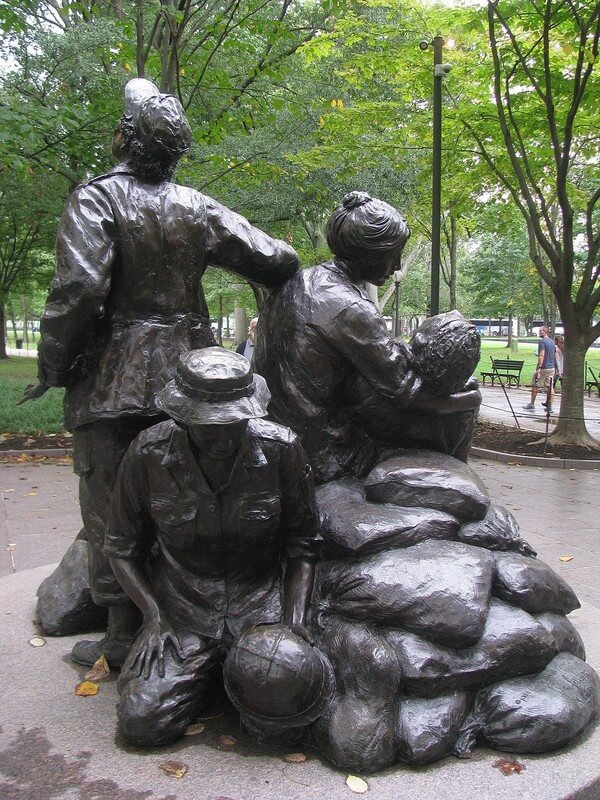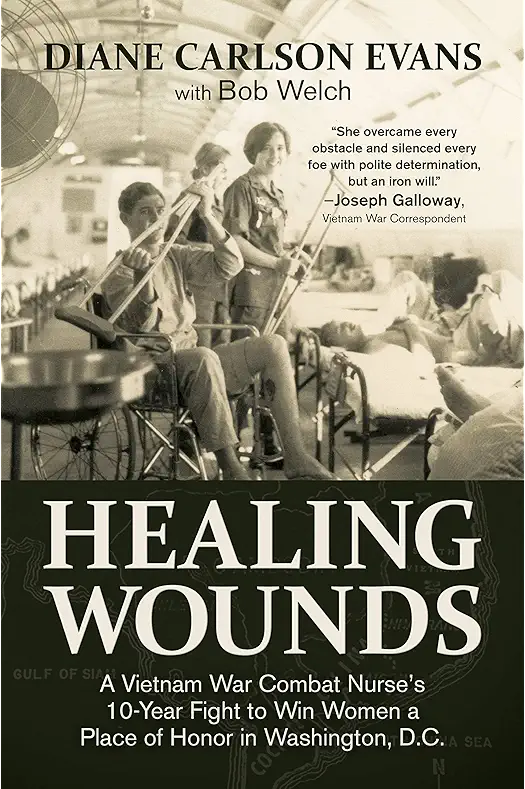I’m in a book club, which meets approximately once a month. We had read and discussed Kristin Hannah’s The Women. Although Hannah’s book is an excellent read, we thought it would be interesting to find a book that was not fiction but a true story of nurses who served in Vietnam.
Diane Carlson Evans’ Healing Wounds: A Vietnam Combat Nurse’s 10-Year Fight to Win a Place of Honor in Washington D.C. was our choice. Evans grew up on a dairy farm in Minnesota and graduated from nursing school in Minneapolis. She enlisted in the Army and served in Vietnam from 1968-1969.
In her diary, she describes the two places in Vietnam where she served. After her first six months, she requested a transfer to Pleiku where the fighting was horrific. She learned the US government had been lying about the fierceness of combat and loss of life: the US inflated the body counts of the North Vietnamese and deflated the loss of US soldiers.
Upon her return to the US, she saw how the returning soldiers were treated. They were welcomed back with spitting, swearing, shouting, and protesting-in-your-face antics. She writes in her book, “So, you leave as a defender of the free world and return as the enemy.”
Back in the states, she knew she had problems adjusting. She couldn’t sleep on top of her bed, so she’d lie on the floor with the same poncho she’d worn in Vietnam wrapped around her. Even though she had family, she knew she needed to support herself. She got a position at a hospital in Minneapolis, but she discovered she’d rather work in a military hospital. She first went to Tacoma, WA and then applied for the job at the Army Medical Center, Fort Sam Houston, in San Antonio where she met her husband. She continued to have flashbacks but was in denial and didn’t tell her husband (later in life she discovered she had PTSD).
She went to D.C. for the dedication of the Vietnam Wall, which honored men only so, she decided she wanted to lead an effort to honor the women who had served during the Vietnam War. Her efforts to find a way to fund a memorial resulted in threats, etc., but she was not deterred from her goal. She worked for ten years spearheading the quest to raise money and to get approval from Congress, the Dept. of Interior, Commission of Fine Arts, National Capitol Commission, and broadening efforts to gain support from a large swath of the public. Finally, her work and persistence with the help of others resulted in the dedication of the women’s memorial in D.C. on November 11,1993.
If you have any suggestions for other non-fiction books about the Vietnam War, I would appreciate your recommendations.
I’ve included a photo of the women’s memorial of Glenna Goodacre’s bronze sculpture depicting a fallen soldier surrounded by three nurses. One nurse is tending to the soldier, a second nurse looks up to the sky looking for the rescue helicopter, and the third nurse holds the soldier’s helmet.









